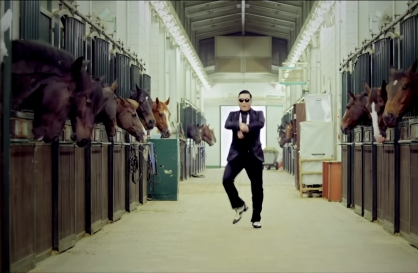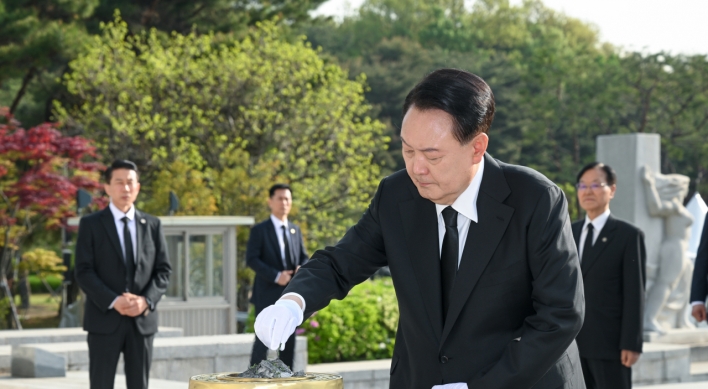Most Popular
Korean History
-
1
2014 ferry disaster left scars that never healed

-
2
In 2012, K-pop makes leap from 'Gangnam' to the world

-
3
Deadly sinking of Navy ship in 2010 marks worst postwar military disaster

-
4
In 2008, Korea's National Treasure No. 1 went down in flames

-
5
In 2005, science world’s biggest scandal unravels in Seoul

[Korean History] Korea’s own Jonestown Massacre lesson on dangers of cults
Mass murder-suicide of 32 in connection to Odaeyang cult shocks nation in 1987
By Jung Min-kyungPublished : May 31, 2023 - 13:07
From the infamous Jonestown Massacre in Guyana in 1978 to the more recent case of the "starvation cult" in Kenya this April, the world has witnessed a disturbing string of mass deaths associated with religious cults.
In the summer of 1987, South Korea, too, had its own harrowing experience.
On Aug. 29, a chilling discovery was made in the attic of a factory in Yongin, Gyeonggi Province. It was a bizarre scene: Bodies were stacked upon one another, their feet bound and nostrils stuffed with toilet paper. Beside them, a man hung lifeless suspended by a rope from the ceiling.

The Korea Herald prominently covered the news with a front-page article titled, “Woman head of debt-ridden company kills 31, then commits suicide,” based on the initial assumptions made by the police.
What authorities knew then, however, was only a fraction of the convoluted story behind the country's most devastating cult-related crime.
Cult runs business
Today, the 1987 mass death is commonly referred to as the Odaeyang Incident.
Odaeyang is the name of a traditional handcrafted goods manufacturer which owned the Yongin factory. The company, however, was essentially a cult in disguise.
Founded by a woman named Park Sun-ja in 1984, Odaeyang operated by exploiting her followers through long hours of unpaid labor. Most of them had donated their entire personal wealth to the company, plus a considerable amount in loans.
As the cult leader, Park pushed for ambitious business expansion. To bankroll its expansion, the company had to acquire more loans and attract investments. This eventually led the situation to spiral out of control.
According to a report from the Ministry of Justice submitted to the National Assembly later that year, Odaeyang’s outstanding debt amounted to 8.9 billion won ($6.7 million) in the summer of 1987.

As the company’s finances worsened, its creditors -- totaling over 200 -- started to get anxious.
When Park’s followers physically assaulted a couple who visited one of their factories in an attempt to retrieve their money in mid-August 1987, the situation went further south. The assault victims and a number of other creditors filed a lawsuit against Park and the company and the police launched an investigation into the case.
Prior to that point, Park had built a reputation as a respected businesswoman.
She was recognized as a model entrepreneur with sharp business acumen who was also passionate about charity, operating orphanages and nursing homes. She received several awards and honors, including some bestowed under the name of then President Chun Doo-hwan.
But few outside her cult knew who she really was. But it was only a matter of time until Odaeyang’s and Park’s true identity were revealed.
With the police on their tail, Park summoned about 80 of her followers to the Yongin factory. There, she picked 31 of her most trusted followers to hide out with her in the attic. Among them were her three children -- two sons and a daughter aged 24, 21 and 19.
The demise
The Korea Herald’s article reports about the discovery of the bodies as follows:
"Pak’s (Park Sun-ja’s) husband found the one-day-old corpses of four men and 29 women when he tore down the ceiling of an attic over the dining hall … The bodies were in three groups. Scattered around the bodies were toilet papers and rubber gloves.”

Park had been missing since the arrest of 13 of her employees on charges of assaulting a 52-year-old man, his wife and their chauffeur on Aug. 16, the article added.
The article is accompanied by several photos, one showing the gruesome scene of the victims being “sprawled dead” in the attic.
Police at the time suspected Park had forced her followers to take poison before strangling them and killing herself. They were also looking into the possibility that the victims “were persuaded to commit suicide by voluntarily taking (a) toxicant.”
What investigators ultimately pieced together was the following:
1) Park and her followers took diphenhydramine, a drowsy antihistamine that intends to relieve the symptoms of allergies, not poison.
2) Park then asked one of her followers to strangle her, becoming the first one to die.
3) Park’s two sons and the factory’s chief operating officer were most likely the last ones to die after making sure the others were dead -- in some cases through strangulation -- before neatly arranging the bodies stacked atop one another.
The investigators found no hint of struggle, even among those who were strangled. For this, they suspected that the victims must have been physically weakened after staying in the attic for five days, possibly with heat stroke and dehydration.
Police said the attic had no ventilation and that the ceiling surface temperature rose to as high as 70 degrees Celsius mid-day.
Dust settles, leaving questions
The shocking incident left a bitter aftertaste for many, and rumors of an unknown third-party involvement lingered for many years that followed.
Some suspected that the military dictatorship led by Chun Doo-hwan may have been involved in the mass murder-suicide in some way. Others believed that Park had links to other religious groups.
But even with three separate investigations, the police couldn’t find evidence to prove any of these theories.

One of the three investigations was initiated in response to the emergence of six former cult members in July 1991. Their testimonies provided some insight into the events leading up to the cult's ultimate downfall. It was revealed that prior to the mass deaths in 1987, the cult had already taken the lives of three of its members as a form of punishment for disobedience.
Before Odaeyang, Koreans were largely uninformed of the dangers associated with extreme religious groups.
While the incident did serve as a cautionary tale, it did not effectively curb cult activities in the country.
Despite the tragedy and the attention it received, religious cults continued to exist and operate within Korea, as highlighted by a recent Netflix documentary series “In The Name of God: A Holy Betrayal.”
The 8-episode series has brought to light the dark narratives of several Korean cult groups, including Odaeyang, exploring accounts of abuse, fraud and even sexual violence within them.








![[Graphic News] More Koreans say they plan long-distance trips this year](http://res.heraldm.com/phpwas/restmb_idxmake.php?idx=644&simg=/content/image/2024/04/17/20240417050828_0.gif&u=)
![[KH Explains] Hyundai's full hybrid edge to pay off amid slow transition to pure EVs](http://res.heraldm.com/phpwas/restmb_idxmake.php?idx=644&simg=/content/image/2024/04/18/20240418050645_0.jpg&u=20240419100350)











![[From the Scene] Monks, Buddhists hail return of remains of Buddhas](http://res.heraldm.com/phpwas/restmb_idxmake.php?idx=652&simg=/content/image/2024/04/19/20240419050617_0.jpg&u=20240419175937)

![[KH Explains] Hyundai's full hybrid edge to pay off amid slow transition to pure EVs](http://res.heraldm.com/phpwas/restmb_idxmake.php?idx=652&simg=/content/image/2024/04/18/20240418050645_0.jpg&u=20240419100350)

![[Today’s K-pop] Illit drops debut single remix](http://res.heraldm.com/phpwas/restmb_idxmake.php?idx=642&simg=/content/image/2024/04/19/20240419050612_0.jpg&u=)